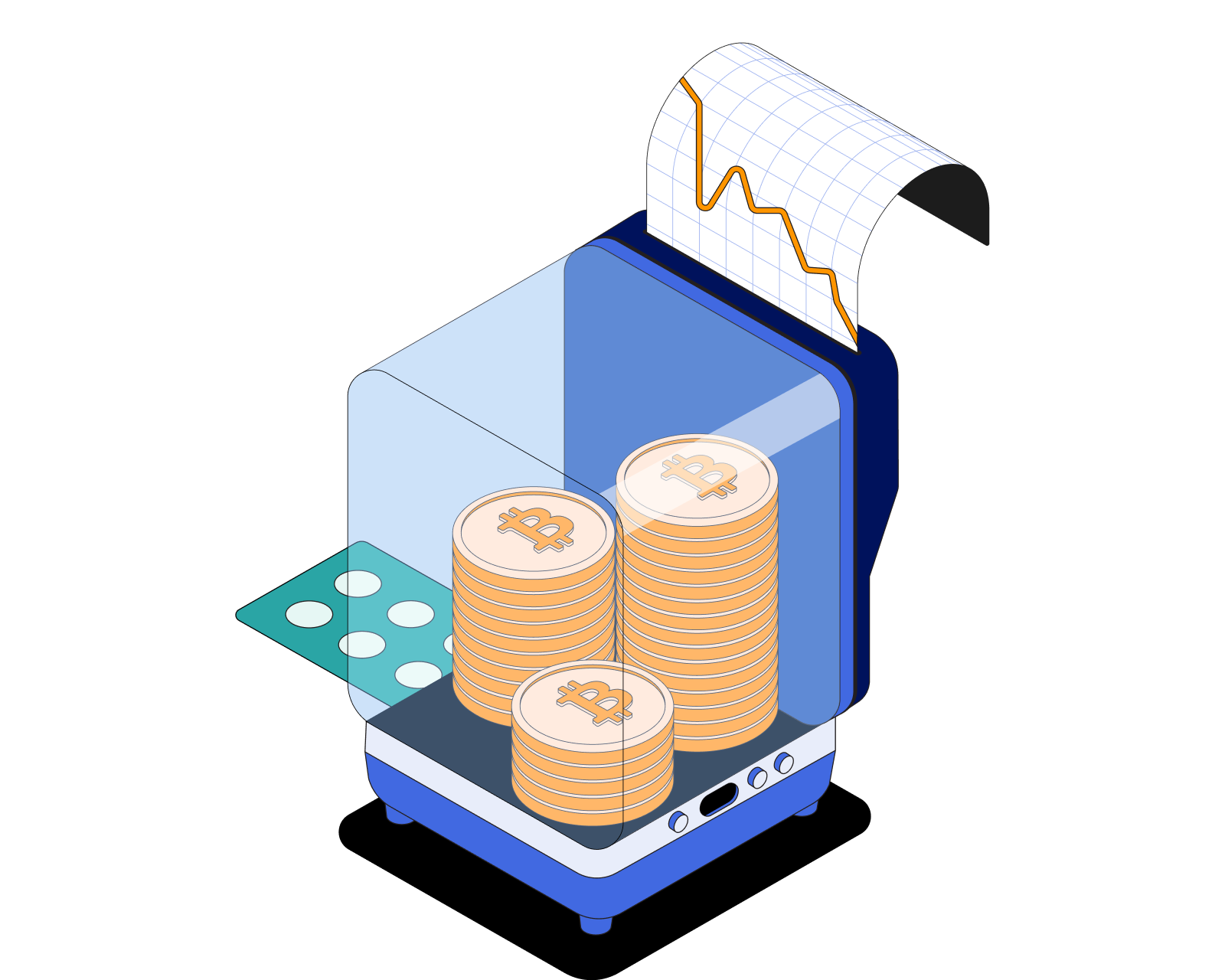What is Impermanent Loss?

Table of Contents
Impermanent Loss: A DeFi Liquidity Provider's Risk
Impermanent loss (IL) is a critical concept for anyone participating in DeFi, especially liquidity providers. This article explains what IL is, how it happens, its impact, and strategies to minimize it.
Get started with a quick introduction to crypto, What is DeFi?, What is a DEX? and DEX lingo.
What is Impermanent Loss?
Impermanent loss occurs when you provide liquidity to a liquidity pool on a DEX, and the price ratio of the two assets in the pool changes. When you withdraw your liquidity, the value of your assets might be less than if you had simply held them. The loss is "impermanent" because if the price ratio returns to its original state before you withdraw, the loss disappears. However, if you withdraw your liquidity while the price ratio is different, the loss becomes permanent.
How Does Impermanent Loss Happen?
DEXs use automated market makers (AMMs) to determine asset prices in liquidity pools. AMMs maintain a constant product formula (e.g., x * y = k, where x and y are the quantities of two assets, and k is a constant). When the price of one asset changes, the AMM adjusts the ratio of assets in the pool to maintain the constant product. This rebalancing can lead to impermanent loss if the price divergence is significant.
Learn more about liquidity and volatility.
Example and Calculating Impermanent Loss
Let's say you deposit 1 ETH and 1000 USDT (1 ETH = 1000 USDT) into a liquidity pool. The total value is 2000 USDT.
- Scenario 1: Price Change and Rebalancing
If ETH's price doubles to 2000 USDT, the AMM rebalances the pool. You'll now have approximately 0.7 ETH and 1414 USDT (0.7 ETH * 2000 USDT/ETH ≈ 1414 USDT). The total value is now 2828 USDT. If you had simply held your 1 ETH and 1000 USDT, you'd have 3000 USDT. The difference (3000 - 2828 = 172 USDT) is the impermanent loss.
- Scenario 2: Price Returns to Original Ratio
If ETH's price returns to 1000 USDT before you withdraw, the pool rebalances back to your original 1 ETH and 1000 USDT. You've earned trading fees, and the impermanent loss disappears.
- Scenario 3: Withdrawal at a Different Ratio
If you withdraw your liquidity while ETH is at 2000 USDT, the impermanent loss becomes permanent. You receive 0.7 ETH and 1414 USDT, totaling 2828 USDT, less than the 3000 USDT you would have had by holding.
The amount of impermanent loss depends on the price change ratio. Several online calculators and formulas can help you estimate potential IL based on price changes.
Factors Influencing and Mitigating Impermanent Loss
Several factors influence IL, including:
- Price Volatility: Higher volatility increases the likelihood and magnitude of IL.
- Correlation Between Assets: Assets moving in opposite directions increase IL. Assets moving together minimize IL.
- Pool Composition: Pools with volatile assets are more susceptible to IL. Stablecoin pools have lower IL.
- Time in the Pool: Longer periods increase the chance of price fluctuations.
Strategies to mitigate IL include:
-
Choose Stablecoin Pairs: Providing liquidity in stablecoin pools minimizes IL due to their price stability. However, rewards might be lower.
-
Provide Liquidity for Correlated Assets: Assets moving together reduce IL.
-
Long-Term Perspective: IL is less impactful over the long term if asset prices recover or if trading fees and rewards offset the loss. Consider dollar-cost averaging.
-
Yield Farming and Liquidity Mining: High yields can compensate for potential IL. Learn about yield farming and how to yield farm in DeFi.
-
Impermanent Loss Insurance: Some protocols offer IL insurance, but it comes at a cost. Learn about crypto insurance.
-
Diversification: Diversify your liquidity provision across different pools and assets to reduce overall risk. Learn about Bitcoin as an asset class.
-
Understanding APY vs. APR: APY includes compounding, while APR doesn't.
-
Active Liquidity Management: Regularly rebalance your portfolio and adjust your liquidity positions based on market conditions.
Conclusion: Balancing Risk and Reward in DeFi
Impermanent loss is a risk LPs must manage. By understanding IL, its causes, and mitigation strategies, you can make informed decisions and maximize your returns in DeFi.
Learn more about DEXs and liquidity.
Related guides
Start from here →
What is DeFi?
Learn what makes decentralized finance (DeFi) apps work and how they compare to traditional financial products.
Read this article →
What is DeFi?
Learn what makes decentralized finance (DeFi) apps work and how they compare to traditional financial products.

What is a DEX?
A decentralized exchange (DEX) is a type of exchange that specializes in peer-to-peer transactions of cryptocurrencies and digital assets. Unlike centralized exchanges (CEXs), DEXs do not require a trusted third party, or intermediary, to facilitate the exchange of cryptoassets.
Read this article →
What is a DEX?
A decentralized exchange (DEX) is a type of exchange that specializes in peer-to-peer transactions of cryptocurrencies and digital assets. Unlike centralized exchanges (CEXs), DEXs do not require a trusted third party, or intermediary, to facilitate the exchange of cryptoassets.

What are liquidity pools?
A liquidity pool is a collection of cryptoassets that help facilitate more efficient financial transactions such as swapping, lending, and earning yield.
Read this article →
What are liquidity pools?
A liquidity pool is a collection of cryptoassets that help facilitate more efficient financial transactions such as swapping, lending, and earning yield.

What is yield farming?
Learn what yield farming is, how it works, different types, and more.
Read this article →
What is yield farming?
Learn what yield farming is, how it works, different types, and more.

What is liquidity?
Liquidity has several slightly different but interrelated meanings. For the purposes of crypto, liquidity most often refers to financial liquidity and market liquidity.
Read this article →
What is liquidity?
Liquidity has several slightly different but interrelated meanings. For the purposes of crypto, liquidity most often refers to financial liquidity and market liquidity.

What is volatility?
Discover the role of volatility in crypto markets, how it’s measured, and more.
Read this article →
What is volatility?
Discover the role of volatility in crypto markets, how it’s measured, and more.
STAY AHEAD IN CRYPTO
Stay ahead in crypto with our weekly newsletter delivering the insights that matter most
Weekly crypto news, curated for you
Actionable insights and educational tips
Updates on products fueling economic freedom
No spam. Unsubscribe anytime.



Start investing safely with the Bitcoin.com Wallet
Over wallets created so far
Everything you need to buy, sell, trade, and invest your Bitcoin and cryptocurrency securely

© 2026 Saint Bitts LLC Bitcoin.com. All rights reserved


